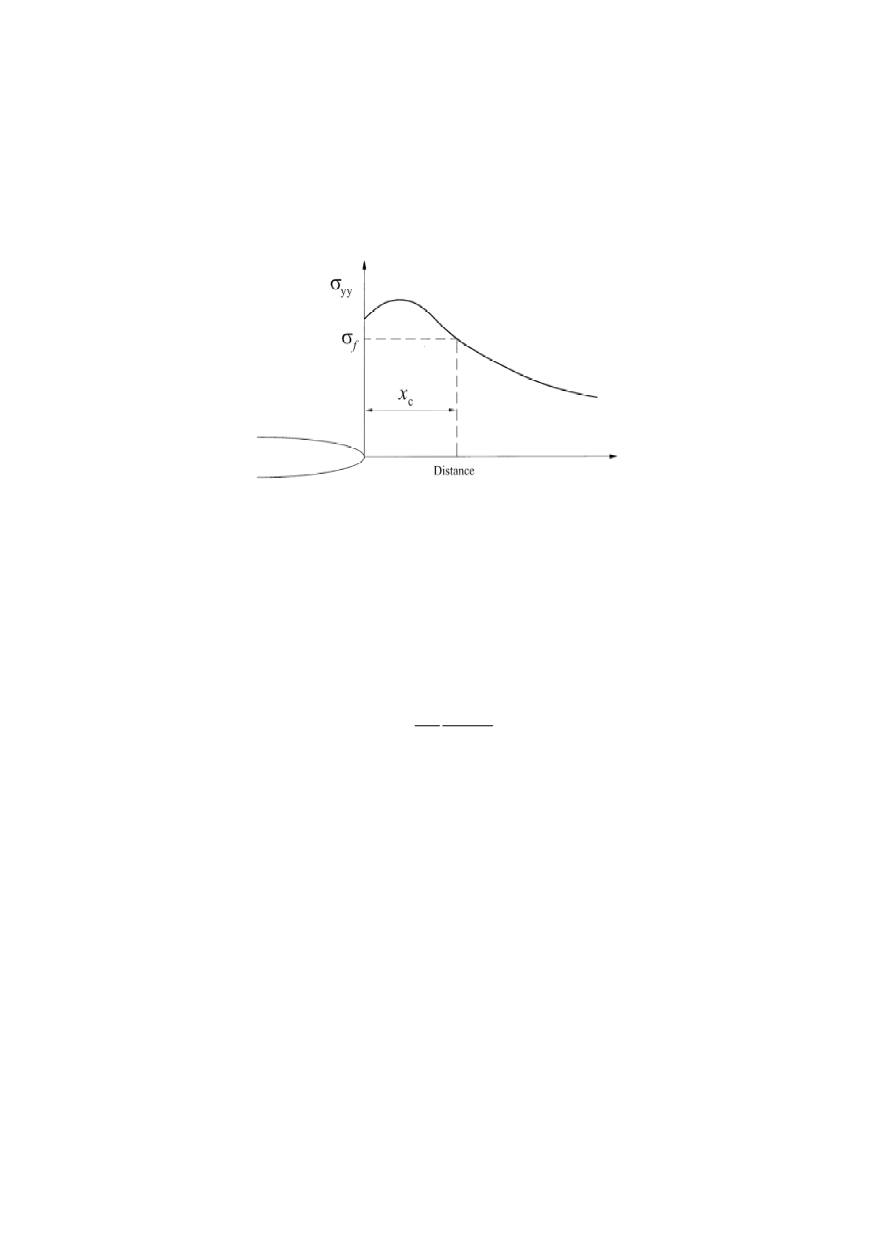

180
The multi faced surface is a typical cleavage, each facet indicates single grain. The
“river patterns” on each facet are typical of cleavage fracture, indicating that multiple
lines converge to a single one, like river confluants.
Ritchie, Knott and Rice /2/ introduced a simple model to relate fracture stress to frac-
ture toughness, explaining why brittle steel does not fracture upon a minimal load is
applied. They postulated that cleavage fracture occurs when the stress ahead of the crack
exceeds
σ
f
over the characteristic distance, Fig. 2, which equals to two grain diameters.
Figure 2: Ritchie-Knott-Rice model for cleavage fracture: failure is assumed to occur when the
fracture stress is exceeded over a characteristic distance
x
c
/2/
3. PLASTIC ZONE
Linear elastic stress analysis of sharp cracks predicts infinite stresses at the crack tip.
In real metals, however, stresses at the crack tip are of finite value due to the crack tip
blunting of finite radius size took place, followed by plastic (yielding) zone. The plastic
zone size estimation for plane stress conditions is
( )
(
)
2
1
2
I
y
YS
K
r
π σ
=
(1)
where
K
I
is stress intensity factor and
σ
YS
is yield stress.
If strain hardening effect is neglected, the stress distribution for
r
=
r
y
can be presented
by horizontal line at
σ
yy
=
σ
YS
, Fig. 3. The stress singularity is truncated by yielding at the
crack tip. When the yielding occurs, the plastic zone radius
r
p
became twice as large as
r
y
.
In plane strain yielding is suppressed by the triaxial stress state, and the Irwin plastic
zone is smaller by a factor 3.
The effective crack length is defined as the sum of the actual crack size
a
and plastic
zone correction
r
y
a
eff
=
a
+
r
y
(2)
The nonlinear material deformation is limited to a small region around the crack tip in
linear elastic fracture mechanics (LEFM). In elastic-plastic fracture mechanics (EPFM)
material exhibits time independent, nonlinear behaviour (i.e. plastic deformation).
Wells noticed that crack faces moved apart prior to fracture /3/. Plastic deformation
had blunted an initially sharp crack, Fig. 4. The blunting level is strongly dependent on
the toughness of the material. This observation led Wells to suggest that the crack tip ope-


















